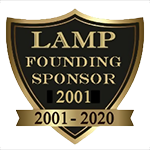eMoviePoster.com
Did you know... what it mean when a poster is "Kraft-backed"?Return to Did You Know Archive Added: 07/16/2012 We've been asked in the past: "I have seen listings on your site (or on eBay) for
posters that are "kraft-backed". What exactly does this mean? Does this mean that someone has glued
the poster to a piece of kraft (craft?) paper? Also, is this something that is reversible, and if
so, how expensive of a process is it to remove the backing?" A: This was done by the poster distributors from as early as 1914 (for sure 1914, maybe earlier) and as late as 1949 (I haven't seen later). The reason was simple. When a poster passed from theater to theater it would quickly become tattered, and the distributor would have to replace it. In the early 1910s, poster distributors hit on a great way to prolong the "life" of each poster by backing many of them onto a very thin linen, and then re-folding them, linen and all, and this let them be used many more times. But likely because the linen was expensive and time consuming, someone around 1914 hit on using a heavy brown (sometimes white) "kraft paper" instead (and by the very early 1920s, the thin linen method was virtually gone). By gluing the poster to kraft (I've always used a "k", but it could be "c") paper, the poster lasted far longer. There was a odd side benefit to this, that has resulted in thousands of posters surviving that never would have otherwise! The heavy paper backing made the posters far bulkier, and after the film's run, the distributor would often give (or sell) the posters to local builders, who would use them in brand-new houses as insulation between the walls or under the floors (this was in pre-asbestos days). The non-backed posters (with the exception of thick window cards) were no good because they were too flimsy. Flash forward 50 or more years, and every so often when a house is torn down, a stash of these posters is found, and often they are surprisingly well-preserved, because the kraft paper is so much stronger than poster paper. Over the past 23 years, I have made three huge finds of these posters, that included many great posters, including lots of three-sheets and six-sheets. As to restoration, the glue used was always water soluble (every one I've had was), so restoration has not been that much harder or more expensive than an unbacked poster (although there IS an added cost of first removing the poster from the backing). The only drawback is that the heavier kraft paper (just like what we used in school as kids) folded rougher than the regular poster paper, and the folds are often more severe. 

Postal Mailing Address:
Bruce Hershenson, P.O. Box 874, West Plains, MO 65775. (For our UPS or FedEx address, click here) phone: +1 417 256-9616 fax: +1 417 257-6948 E-mail: Contact Us Hours of Operation: Monday - Friday 8:30 AM - 12:00 PM & 1:00 PM - 5:00 PM (CST) |
|||||||||||||




